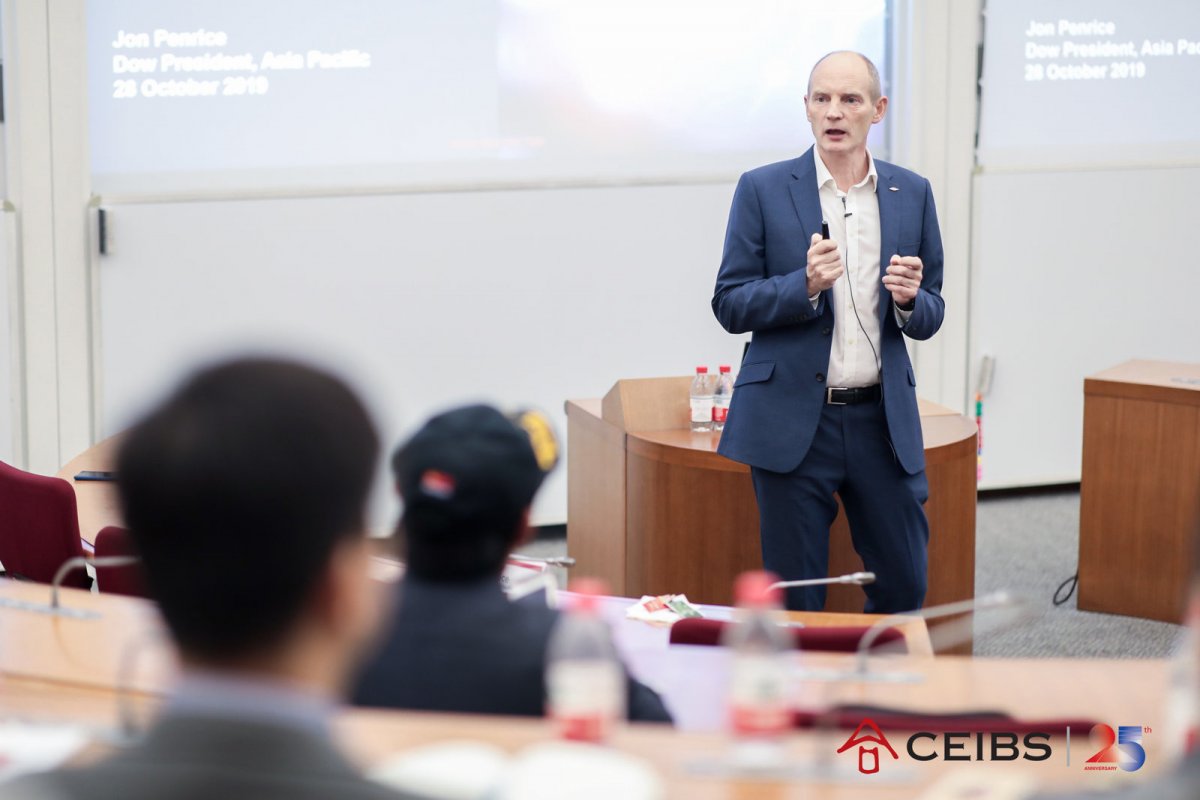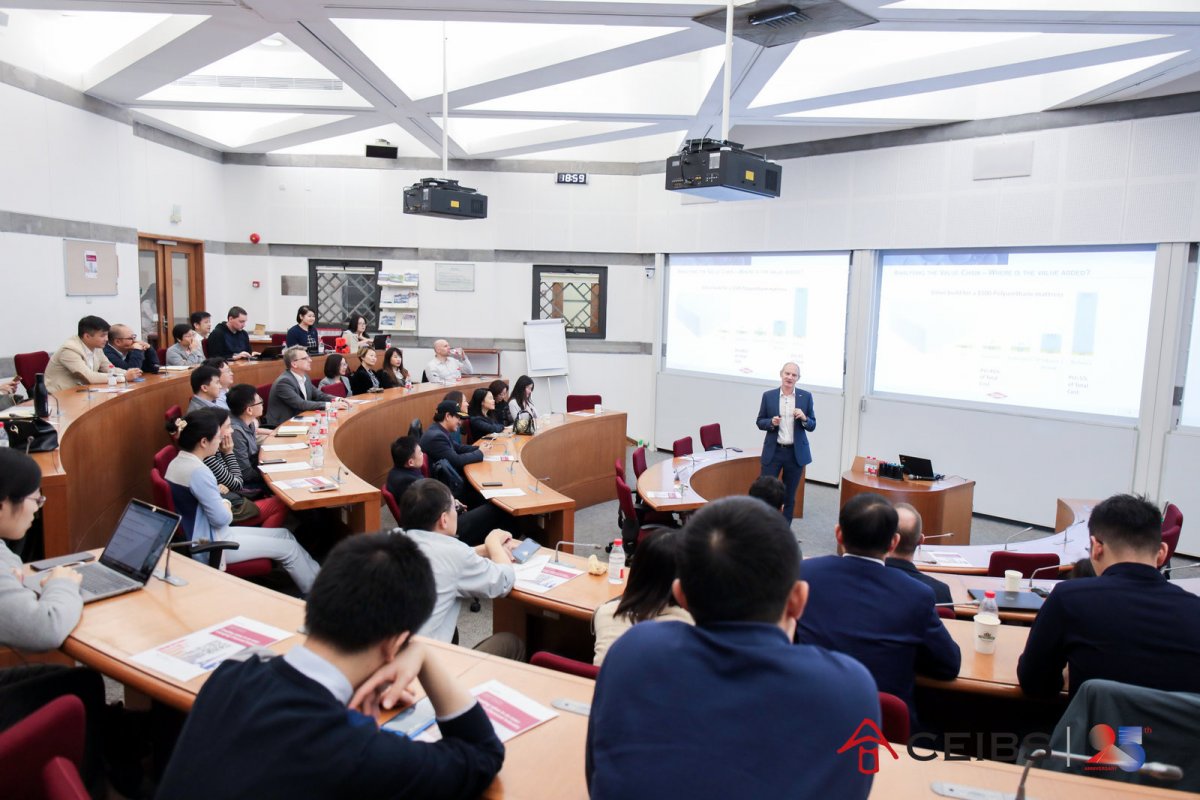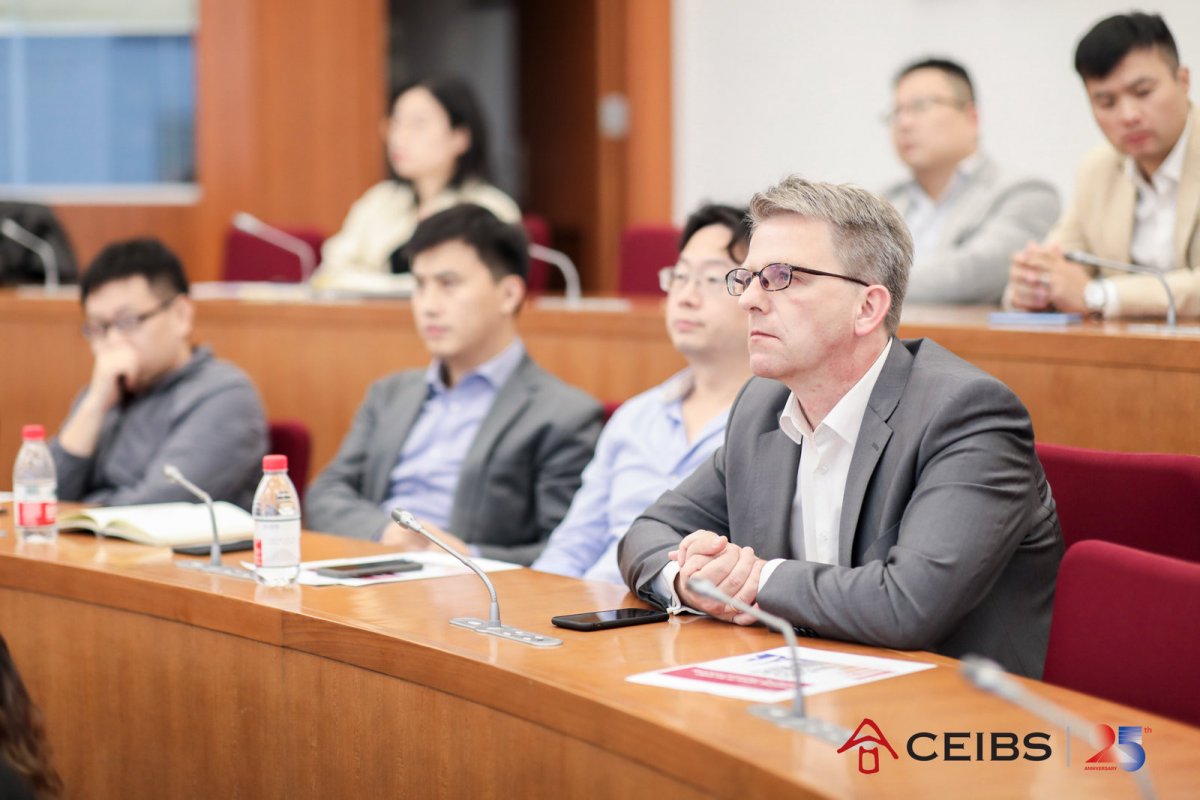CEIBS Executive Forum Explores Creating Value amidst Change
October 28, 2019. Shanghai – “As a marketer, the one thing you don’t like is stability.”
This was just one of the messages delivered by Dow Asia Pacific President Jon Penrice to the nearly 70 members of the CEIBS community who gathered at our Shanghai campus this evening for our latest CEIBS Executive Forum. Mr. Penrice’s talk, entitled Creating Value in an Ever-changing Chemical Industry, examined some of the forces driving change and how companies can create value by translating these into opportunities.
“One thing that is constant in any industry is the constant of creative destruction,” Mr. Penrice told the audience. “All companies are in a constant state of change. The ones who think they are stable are the ones who are probably the next victims of change.”
As an example of this, Mr. Penrice pointed to the chemical industry, where only three of the top 10 companies in 1985 in terms of sales are still around today. Nevertheless, despite the challenges posed by change, he said that companies should learn to embrace them as opportunities.
“As a marketing organisation you desperately want to have something that is disruptive,” he added. “Often many other parts of your organisation don’t like it at all because change is a threat or change equals fear, but as a marketer you need to embrace disruptive innovation.”
For the chemical industry, one source of disruption which has come naturally on its plate is the subject of sustainability.
“Sustainability will be or is already a defining force in the chemical industry,” Mr. Penrice said. “It’s arguably the biggest threat or differentiation opportunity – so every single player in the industry is working on what their sustainability strategy is.”
The chemical industry has long operated on a linear model, taking raw material from the earth, processing it and passing it down the value chain until it is converted into something else – and eventually becomes waste. During his presentation, Mr. Penrice said he believes that this model is going to disappear and be replaced by a circular one.
“We can’t afford as a society to continue the linear business model because we don’t have enough materials,” he continued. “But, worse, we don’t have the climate or the carbon footprint availability for the economic development that we want. So, the only way we can solve this paradox of rising living standards around the world is we have to change the model.”
As it turns out, however, moving from a linear model to a circular one is not so easy. When it comes to the chemical industry, Mr. Penrice explained, the inherent challenge in taking waste from the end of a linear chain and returning it to the beginning of the chain is two-fold. For one, it is technically complicated to un-process waste back into raw materials and, moreover, it is not easy to do economically.
“If that sounds like bad news, the great news is that this will all be a source of innovation,” he said. “[Because] a circular company is going to require truly innovative chemistry and business models to figure out how to make this linear value chain go circular.”
Another source of disruption – and potential opportunity – facing the chemical industry has come in the form of digitalisation. Despite being a slow adopter, Mr. Penrice predicted that the industry will begin to catch up in the next five to ten years.
“The chemical industry has been a big laggard in digitalisation mainly because when you get down to it, it’s big physical stuff, it’s not easy to put in a cardboard box and ship and it has significant EHS concerns,” he explained. “So there are many excuses why the chemical industry isn’t a digital leader, but it doesn’t mean it won’t happen.”
In particular, he said he sees great potential for digital disruption shaping up around the distribution process and how distributors, in particular, will respond to the reshaping of the value chain.
“The traditional role of just connecting the buyer and the seller will probably go away, but the physicality of the industry doesn’t go away,” Mr. Penrice stated. “So, keeping inventory, shipping stuff, making sure of health and safety, all of those things will still be there.”
As a result, Mr. Penrice said he believes there will still be a heavy service component role for distributors to play in the industry – a role which will probably be difficult to digitalise.
“If you think about finance getting digitalised and what is going on with WeChat and Alipay, if you take that into a B2B environment, you’ll be able to take away the role of the financial risk mitigator that the distributor has and connectivity that they provide – so what’s left is the service model,” he concluded, adding that, “My guess is, it will happen in China first.”
For details about other upcoming Executive Forums and other CEIBS events, please visit our events page here.
























